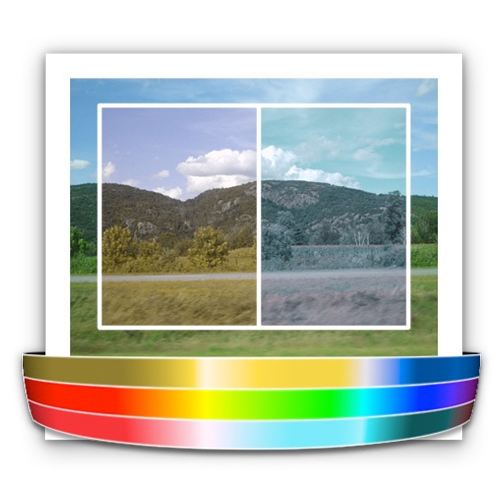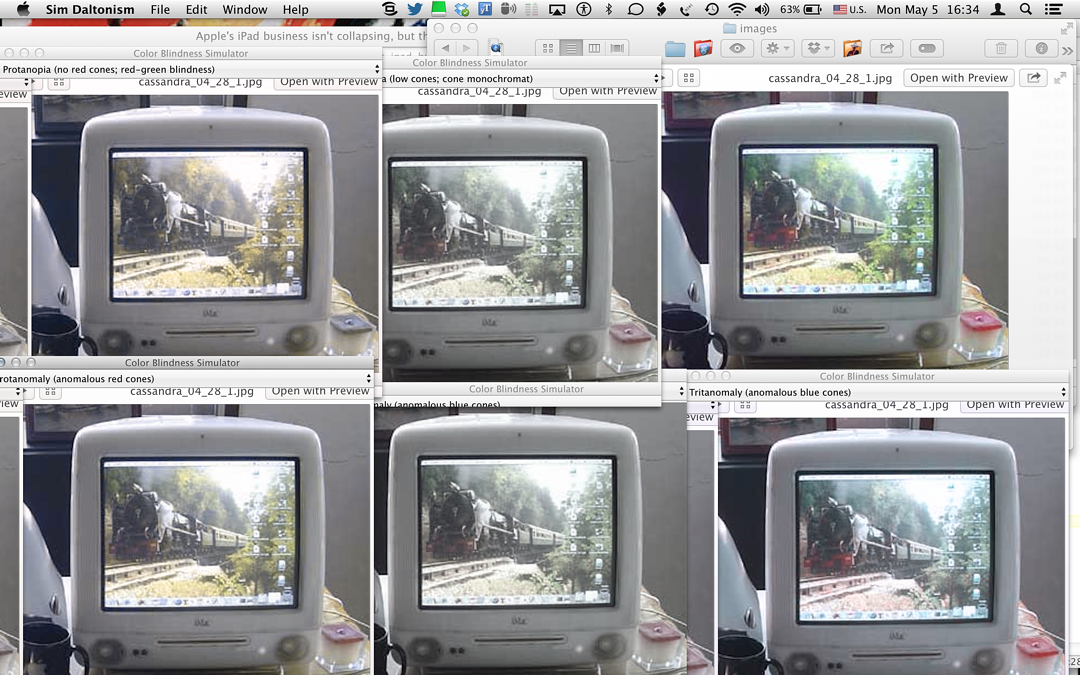|
By Graham K. Rogers

A while back I found an app for testing colour-blindness that did not use the standard Ishahara colour blindness test, that many will be familiar with. This is used to test for driving licences, to test pilots and other skilled professionals, as well as in standard medicals. I can remember taking this while at high school and a number of times since.
 The alternative app, Color Blindness Test by Enchroma took a novel approach in that it used easy to identify shapes instead of numbers, thus making it more useful in an environment where those tested (perhaps the old or the young) were unfamiliar with Arabic numbers.
The alternative app, Color Blindness Test by Enchroma took a novel approach in that it used easy to identify shapes instead of numbers, thus making it more useful in an environment where those tested (perhaps the old or the young) were unfamiliar with Arabic numbers.
I first looked at the app in December 2012 and reviewed it then. I also examined a number of apps that were based on the Ishihara test.
I found that the Enchroma app was also useful in writing classes. I wrote about this a few months ago in an item in using the iPhone as a teaching tool. I had found the app useful mainly because of the way it was organised, but there were other key points that helped: it was also available as an Android app (with subtle differences) which meant students did not need to own an iPhone; and the subject itself allowed discussion beforehand about the students' own knowledge.
Without telling the students about the app, I began by asking them to write down what they knew about colour blindness, with access to online sources banned. Naturally, some knew less than others, but by pooling the ideas on a white board, information was shared.
Although the students knew what color-blindness was, few had experience as engineers here cannot be licensed if they are color blind, although there may be certain exemptions for disciplines like computer engineering for those with mild symptoms.
There are several types of color-blindness, depending on the specific color deficiency experienced:
- Anomalous Trichromacy
- Protanomaly (reduced sensitivity to red light),
- Deuteranomaly (reduced sensitivity to green light), and
- The rare Tritanomaly (reduced sensitivity to blue light)
- Dichromacy
- Protanopia
- Deuteranopes
- Triteranopes
- Monochromacy or achromatopsia, when everything is rendered in black, grey and white.
The earliest work on color-blindness is attributed to John Dalton and his name is used as a general term to indicate color-blindness: Daltonism.
Taking this for its name, the app Sim Daltonism - as the name suggests - simulates forms of color blindness which allows users, such as my students, to experience what it actually means to be colour blind. The app is available on the Mac App Store and installed takes up 1.7 MB space.
It opens simply as a panel that shows a section of the current window. As the cursor is moved about, so the display content also changes and certain colours appear either grey or washed out. To have a better idea of how this would work, I opened 8 images in QuickLook and the Sim Daltonism panel showed the same images albeit rather differently. Owing to the nature of the way the windows are displayed, the screen was at times congested as multiple clones of the same panel were shown.

Original Images Opened in Quick Look (right)
In the application the default display of color-blindness is for Protanopia (no red cones; red green blindness). That information is shown at the top of the Sim Daltonism panel. To the right are twin arrows allowing access to the other options that are available. These are as in the list (above) from the Colour Blind Awareness site, albeit in a slightly different order. The app adds an additional form of monochromacy: Atypical achromatopsia.
Sim Daltonism also displays a panel with Normal trichromatic color vision, so that a base-line comparison is available. Each of these could also be accessed using the Command key plus a number from 1 - 9. With the ability to open several windows, and to select a different problem type in each of the windows, it was possible to make direct comparisons.

Original Image Top Right
Being able to see what each type of color-blindness looked like gave me a better appreciation of problems that those so-afflicted might experience. When I next use the theme of colour blindness for a writing project, using Sim Daltonism, the students will also be able to have a better idea of what the specific problem means in practical terms.
Graham K. Rogers teaches at the Faculty of Engineering, Mahidol University in Thailand where he is also Assistant Dean. He wrote in the Bangkok Post, Database supplement on IT subjects. For the last seven years of Database he wrote a column on Apple and Macs. He is now continuing that in the Bangkok Post supplement, Life.
|






